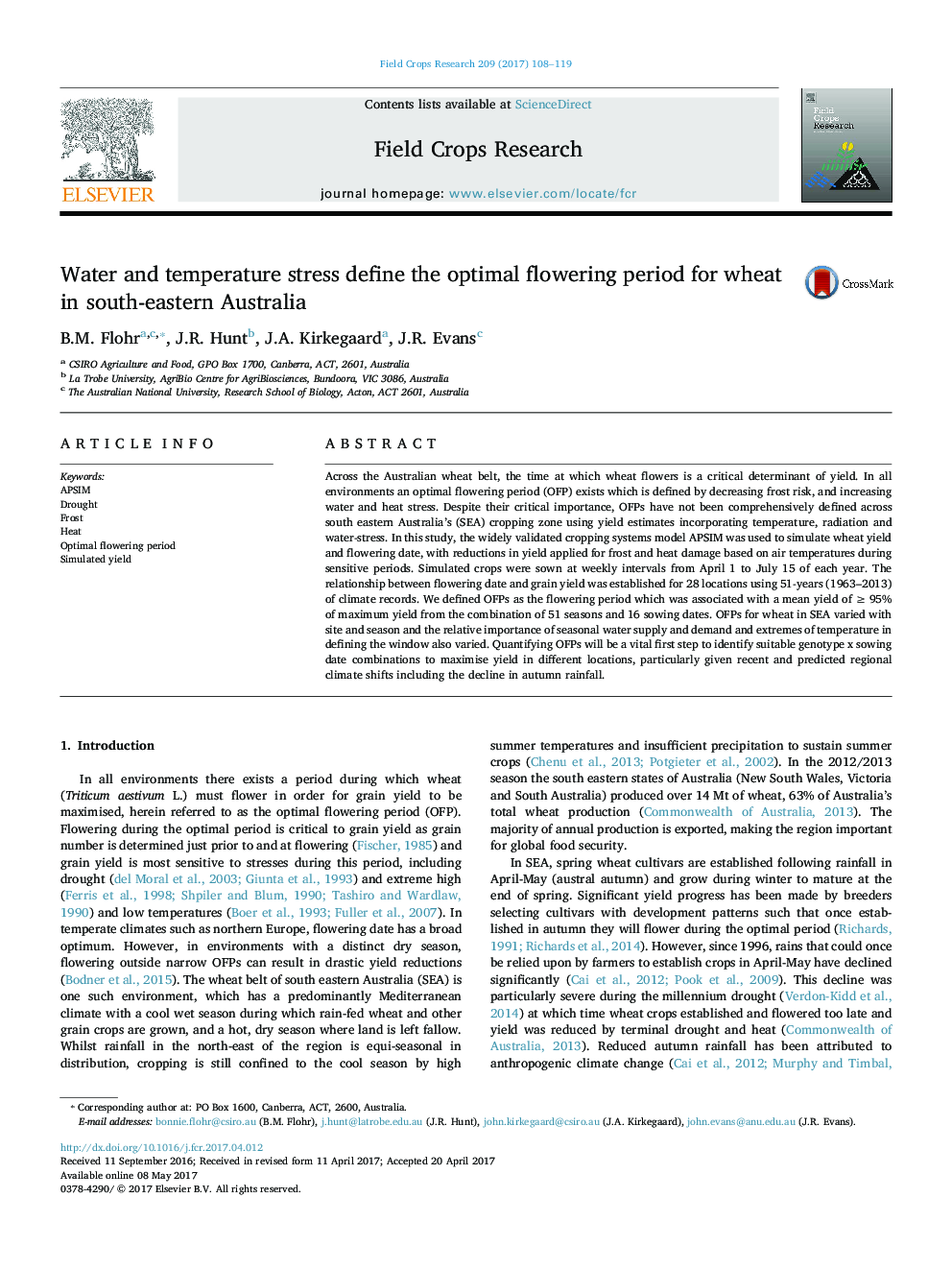| Article ID | Journal | Published Year | Pages | File Type |
|---|---|---|---|---|
| 5761507 | Field Crops Research | 2017 | 12 Pages |
Abstract
Across the Australian wheat belt, the time at which wheat flowers is a critical determinant of yield. In all environments an optimal flowering period (OFP) exists which is defined by decreasing frost risk, and increasing water and heat stress. Despite their critical importance, OFPs have not been comprehensively defined across south eastern Australia's (SEA) cropping zone using yield estimates incorporating temperature, radiation and water-stress. In this study, the widely validated cropping systems model APSIM was used to simulate wheat yield and flowering date, with reductions in yield applied for frost and heat damage based on air temperatures during sensitive periods. Simulated crops were sown at weekly intervals from April 1 to July 15 of each year. The relationship between flowering date and grain yield was established for 28 locations using 51-years (1963-2013) of climate records. We defined OFPs as the flowering period which was associated with a mean yield of â¥Â 95% of maximum yield from the combination of 51 seasons and 16 sowing dates. OFPs for wheat in SEA varied with site and season and the relative importance of seasonal water supply and demand and extremes of temperature in defining the window also varied. Quantifying OFPs will be a vital first step to identify suitable genotype x sowing date combinations to maximise yield in different locations, particularly given recent and predicted regional climate shifts including the decline in autumn rainfall.
Keywords
Related Topics
Life Sciences
Agricultural and Biological Sciences
Agronomy and Crop Science
Authors
B.M. Flohr, J.R. Hunt, J.A. Kirkegaard, J.R. Evans,
